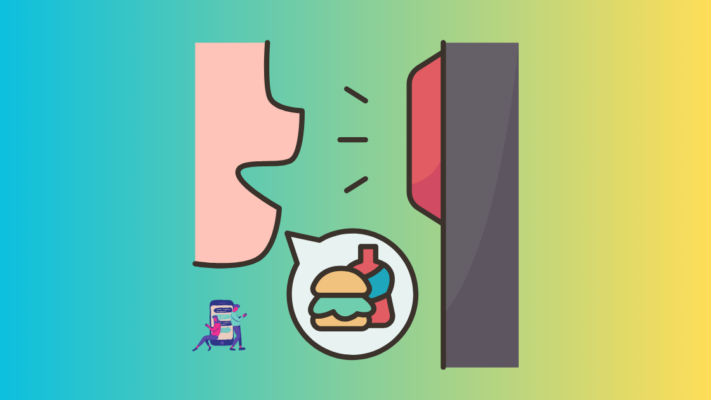Nowadays technology constantly reshapes how consumers connect with restaurants and food delivery businesses in the frequently evolving food delivery landscape. Looking ahead, it’s exciting to consider future developments that will reinvent food ordering software and transform the dining experience. Let us look at the future frontier of food ordering software script, from innovative technologies to rising customer desires.
The Future Trends in Food Ordering Software Script
1. Voice-Activated Ordering

Imagine living in a society where ordering takeout is as easy as speaking. Voice-activated ordering, which provides unmatched accessibility and convenience, has the potential to change the market. Advances in speech recognition and natural language processing technologies allow consumers to easily engage with the food ordering software script. This results in a more hands-free and intuitive ordering experience.
2. Augmented Reality Menus

AR (augmented reality) has the power to completely alter how customers peruse menus and visualize the food. With AR glasses or a mobile, users can see realistic menu item representations due to AR menus that overlay digital data in the real world. AR menus boost consumer engagement and assist in better decision-making by offering immersive and interactive eating experiences.
3. Personalized Recommendations

Personalized suggestions, which make use of machine learning and data analytics, will be vital in determining how people purchase food in the future. The food ordering script can provide customized recommendations that accommodate specific preferences and dietary requirements by examining user preferences, previous orders, and contextual information. In addition to improving the user experience, this hyper-personalization increases client happiness and loyalty.
4. Ghost Kitchens and Virtual Brands

The emergence of virtual brands and ghost kitchens is changing the restaurant business and having an impact on the advancement of the food ordering software script. These virtual kitchens, which merely offer delivery and takeout services, largely rely on technology to keep track of orders, determine the best routes for deliveries, and run smoothly. Food ordering software will need to change to properly accommodate this new business model as ghost kitchens continue to spread.
5. Contactless Delivery and Pickup

Contactless delivery and pickup options gained popularity during the COVID-19 pandemic, and this trend is still continuing. Features that enable contactless transactions, such as digital payments, curbside pickup notifications, and real-time order monitoring, will be given priority in the food ordering software script. Businesses and software developers alike will continue to place a high premium on providing clients with a smooth and clean experience.
6. Blockchain Technology for Food Traceability

Food delivery services now giving more priority to blockchain technology due to worries about food safety and traceability. With the use of blockchain technology, food items can be tracked transparently and decentralizedly. From farm to fork, giving customers assurance about the authenticity and quality of their food. Integrating blockchain into the online food ordering software script can enhance trust and transparency across the supply chain.
7. Subscription-Based Meal Services

Meal subscription services are becoming more popular as customers look for convenient and inexpensive dining options. The food ordering software script will need to support subscription models that provide meal planning, savings, and other benefits to members. Subscription-based services have the power to change the economics of the food sector by generating a steady stream of income and encouraging consumer loyalty.
8. Smart Kitchen Appliances and IoT Integration

The introduction of smart kitchen equipment and Internet of Things (IoT) devices opens up new avenues for connection and automation in meal ordering software. Consider a refrigerator that automatically replenishes ingredients depending on your favorite recipes, or a stove that sends cooking instructions straight to your meal delivery service. The food ordering software script that integrates with IoT networks can expedite meal preparation and increase consumer convenience.
9. Hyperlocal and Micro-Marketplaces

Hyperlocal food delivery platforms are gaining popularity as consumers seek neighborhood-centric dining options and support local businesses. The food ordering software script will need to adapt to the dynamics of hyperlocal markets, facilitating transactions between nearby restaurants and customers within specific geographical areas. By fostering community engagement and promoting local flavors, hyperlocal marketplaces contribute to the vibrancy of urban dining scenes.
10. Virtual Reality Dining Experiences

Virtual reality (VR) offers the ability to transport customers to a different kind of eating experiences without leaving their homes. VR dining experiences allow consumers to tour virtual restaurants, interact with digital avatars, and even recreate the feeling of eating food via haptic feedback. VR eating has the potential to be a creative kind of entertainment and gastronomic discovery, despite its early stages of development.
Wrap Up: Future Trends in Food Ordering Software Script
There is so much potential and innovation in the field of the online food ordering script in the future. These new technologies promise to completely change the way we order, eat, and enjoy food. Examples include voice-activated ordering and blockchain-enabled traceability. Food ordering software developers have the power to influence the future of the eating industry. They can provide their customers with outstanding dining experiences all around the world by embracing technology and predicting changing consumer preferences.
Aparna Babukuttan is a content writer at Bytesflow Technologies who writes with passion and emotions. She has a keen interest in exploring the latest technologies and has years of experience in writing for artificial intelligence and Web3 including blockchain, NFT, metaverse, and cryptocurrency. Beyond Blockchain, Aparna also lends her expertise to crafting captivating narratives for on-demand food delivery businesses.








